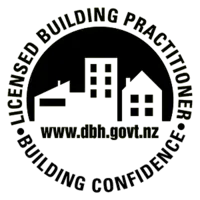Building a new home in the Wellington, Kapiti Coast or Hutt Valley areas of New Zealand means navigating a unique set of environmental factors and stringent regulations. From Wellington’s legendary winds to seismic considerations and coastal salt, every location presents specific challenges. At Smartway Builders, we don’t just abide by these rules; we’ve perfected the process to integrate them seamlessly into your home construction, ensuring your home is resilient, comfortable, and compliant from day one.
Wind Speed: Designing for New Zealand’s Dynamic Gusts
Anyone building in Wellington or other blustery parts of New Zealand understands the powerful impact of wind. Smartway Builders meticulously accounts for wind speed classifications (Low, Medium, High, Very High, Extra High, and Specific Engineered Design – SED). Our systems and processes guide us in assessing door and window placement, bracing requirements, and the structural integrity of wall cladding and roofing. With the help of our team of experts we analyse your home’s exposure to the ocean, nearby structures, and elevation, ensuring designs for new builds and home renovations meet or exceed the required wind resistance – especially for SED zones, where every aspect of your home has to be engineer-approved, impacting both design and construction costs.
Thermal Efficiency: Building for NZ’s Diverse Climate Zones
New Zealand’s varied temperatures dictate specific thermal efficiency requirements. Our new home builds and renovations adhere to the R-value requirements for insulation and energy-efficient windows (including double-glazing) appropriate for your region. We ensure your home is optimised for comfort and compliance:
- Zone 1: Northland, Auckland, Franklin District, Coromandel Peninsula
- Zone 2: Most of the North Island (excluding Central Plateau)
- Zone 3: Central Plateau (North Island) and all of the South Island
Smartway Builders utilises innovative systems to specify the correct insulation and glazing, ensuring optimal thermal performance and long-term energy savings for your Wellington home construction.
Earthquake Risk: Engineering for Seismic Resilience
As New Zealanders, we are all too familiar with earthquake activity. The country is divided into four Earthquake Risk Zones, each with varying stringent requirements for new builds and home renovations. Properties in higher-risk zones naturally incur more complex design and higher construction costs due to enhanced structural demands. The Smartway Builders team incorporates advanced seismic engineering principles from the initial design phase, ensuring your home is built with the utmost resilience and Building Code compliance against seismic activity.
Snow Load: Robust Roofing for Alpine Regions
For new homes or renovations in the snowy regions of the North Island or the alpine South Island, roof structures must be precisely assessed for their weight-bearing capacity in the presence of snow. Our detailed planning processes account for any relevant snow load requirements, ensuring your roof is constructed to safely withstand significant accumulations, providing robust protection for your property.
Salt Exposure: Protecting Coastal Homes from Corrosion
Coastal living is idyllic, but homes near the ocean or estuaries (typically Zone C and D, within 500 meters of a coastline or estuary; Zone B is low risk) face severe salt exposure. This can rapidly impact external fixings, such as screws, nails, and brackets, leading to corrosion and structural compromise. Where necessary, Smartway Builders selects special, corrosion-resistant fixings and materials, integrating them into the build process to withstand the relentless salt assault. This foresight, although it adds initial cost, ensures the long-term durability and integrity of your coastal home construction.
The Smartway Builders Advantage: Navigating Environmental Complexity with Confidence
Building a new home that expertly navigates these environmental factors can seem complex, but Smartway Builders makes the process simpler. As one of the top building companies in the greater Wellington area, our years of experience are underpinned by robust systems, processes, and technology. This enables us to ensure your project is not only beautiful but also resilient, compliant, and built for New Zealand’s unique environment.
Speak with Smartway Builders today and let us bring your dream home to life with confidence and peace of mind!
For more detailed information on avoiding common pitfalls, be sure to check out our guide: “Avoiding Expensive Mistakes When Building a New Home In The Greater Wellington Region- 2025 Edition” .
Building in NZ? Smartway Builders expertly navigates wind, seismic, thermal, & salt exposure to build new homes in the greater Wellington area that are resilient, compliant, and energy-efficient



